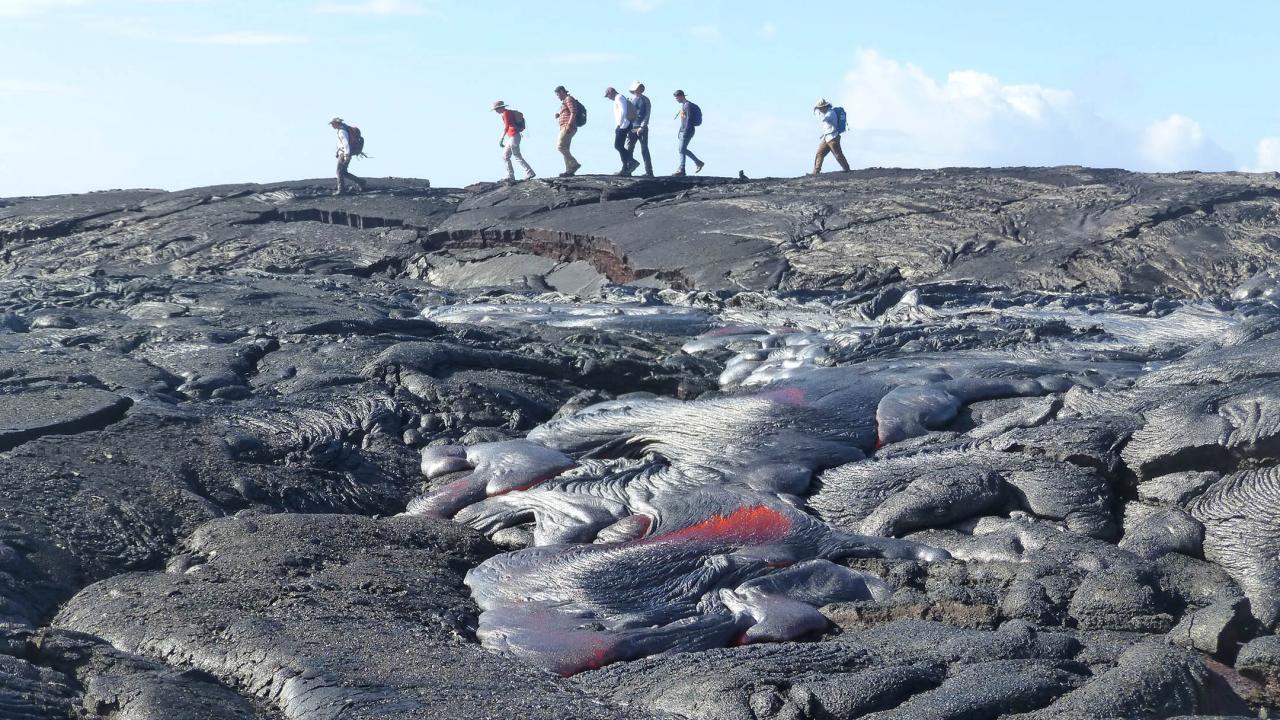Coordinating the emergency response to an erupting volcano is an all-hands-on-deck affair that leaves little time for extra work, such as answering boatloads of inquiries from researchers who want to collect rock samples. On the other hand, science done during eruptions provides essential data for understanding and forecasting future volcanic flare-ups.
To help balance these interests, scientists like Kari Cooper, professor of earth and planetary sciences at UC Davis, are exploring how to prioritize public safety while maximizing the limited time and access for collecting data and samples. Cooper is a disciplinary leader in petrology/geochemistry for the Community Network for Volcanic Eruption Response (CONVERSE). Funded by the National Science Foundation, CONVERSE will improve cooperation between scientists at academic institutions and the U.S. Geological Survey (USGS), the agency responsible for volcano monitoring and eruption response.
“The mandate of the USGS during an eruption is mitigation and response; they don’t have the bandwidth to handle every request for data and samples,” Cooper said. Through CONVERSE, the global community of volcano scientists will coordinate research requests during eruptions and take some of the pressure off USGS personnel.
Broadening access
Another goal for CONVERSE is to increase the pool of researchers who participate in eruption science. In the past, scientists with existing connections to the USGS were typically the ones granted access to an ongoing eruption, an unintended consequence of the limited time available for evaluating requests, Cooper said. “Part of the mandate of CONVERSE is to broaden the diversity of the community response to include people at all career stages and people who don’t happen to know someone at a USGS observatory,” she said.
To work out the best ways to achieve these goals, last year CONVERSE members conducted a virtual exercise based on a hypothetical eruption of Mount Hood in the Oregon Cascades. The scenario was a valuable practice run for the December 2020 eruption at Hawaii’s Kilauea volcano, she said. “There was a real sense of engagement and interest among all parties, with the academic and USGS sides really working together,” Cooper said. “This can lead to a lot of science getting done that couldn’t be done in the past, and all that science will feed back into eruption forecasting and mitigation. I see it snowballing into something really exciting and productive in the long term.”
The group’s findings from the Mount Hood exercise and the Kilauea response were published recently in the American Geophysical Union’s Eos magazine.
Media Resources
Making the Most of Volcanic Eruption Responses (Eos)
Community Network for Volcanic Eruption Response
Becky Oskin is a content strategist in the College of Letters and Science.
